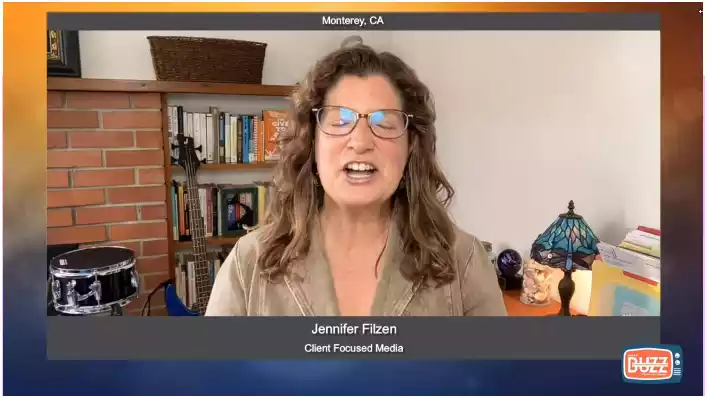Collaborative Care: How Providers and Payers Can Optimize Prior Authorization Journey
Explore how to optimize prior authorization journey in the virtual healthcare era, transforming patient care and efficiency. Discover the strategies driving this shift.

When it comes to certain medical services, Medicare prior authorization is a necessary step to ensure coverage. This process requires your healthcare provider to obtain approval from Medicare before performing certain procedures, providing equipment, or prescribing specific medications. The goal is to verify that the service or treatment is medically necessary and meets Medicare’s guidelines. If prior authorization isn’t granted, Medicare may not cover the cost, leaving you responsible for payment. Understanding how Medicare prior authorization works can help you avoid delays and ensure that your medical care is covered.
Let’s start the journey!
Table of Contents
How Providers and Payers Can Optimize Prior Authorization Journey

The prior authorization process involves several steps, beginning with the healthcare provider’s assessment of the patient’s need for a particular service or medication. To optimize the prior authorization journey, it’s crucial that once a decision is made to proceed, the payer receives a request from the provider that includes the necessary clinical records and an explanation for the treatment. Next, the payer determines whether the service is medically essential and reimbursed by the patient’s insurance by comparing this data to established medical policies and standard plans. If approved, the provider can proceed with the treatment; if denied, the provider may appeal the decision or consider alternative treatment options.
Understanding the Prior Authorization Process
The prior authorization process involves several steps, beginning with the healthcare provider’s assessment of the patient’s need for a particular service or medication. Once a decision is made to proceed, the payer must receive a request from the provider that includes the necessary clinical records and an explanation for the treatment. Next, the payer determines whether the service is medically essential and reimbursed by the patient’s insurance by comparing this data to established medical policies and standard plans. If approved, the provider can proceed with the treatment: if denied, the provider may appeal the decision or consider alternative treatment options.
Common Challenges in the Prior Authorization Process
- Administrative Burden: Among the biggest obstacles in the PA process is the administrative burden on healthcare providers. The need to gather extensive documentation, fill out multiple forms, and comply with varying payer-specific requirements can consume substantial time and resources.
- Delays in Patient Care: The PA process can cause delays in patient care, affecting treatment timelines. These delays can lead to worsened health conditions, increased patient anxiety, and overall dissatisfaction with healthcare services.
- Variability in Requirements: Different payers often have different PA requirements, which can be confusing and challenging for providers. This variability can result in inconsistency and inefficiency in the PA process.
- Lack of Transparency: An absence of openness in the PA process can make it difficult for providers to understand why a particular request was denied and what additional information may be needed to obtain approval.
Strategies for Optimizing the Prior Authorization Journey
Enhancing Communication and Collaboration
- Open Communication Channels: Establishing open communication channels between providers and payers is essential for efficient PA processing. Regular meetings, phone calls, and emails facilitate the exchange of information, clarify requirements, and address any concerns promptly.
- Dedicated PA Liaisons: Dedicated liaisons within provider organizations and payers can streamline communication. These people could serve as points of contact, ensuring that PA requests are processed swiftly and any issues are resolved quickly.
- Collaborative Platforms: Utilizing collaborative platforms or portals where providers and payers can submit, track, and manage PA requests can enhance transparency and streamline the process. These platforms can provide real-time updates and allow for better coordination between both parties.
Standardizing and Simplifying the PA Process
- Standardized Forms and Procedures: Developing standardized forms and procedures for PA requests can reduce variability and make it easier for providers to submit the necessary information. Standardization can minimize errors and ensure that all required documentation is included from the start.
- Clear Guidelines and Criteria: Payers should provide clear guidelines and criteria for PA requests, including specific documentation requirements and medical necessity criteria. This transparency can help providers understand what is needed to obtain approval and reduce the likelihood of denials.
- Streamlined Documentation: Accepting electronic medical records (EMRs) and other digital formats can simplify documentation and reduce providers’ administrative burden. Electronic submission of PA requests and supporting documents can expedite the review process.
Leveraging Technology and Data
- Electronic Prior Authorization (ePA): Implementing electronic prior authorization systems can automate and streamline the PA process. EPA systems can integrate with providers’ EMR systems, allowing for seamless submission, tracking, and management of PA requests.
- Data Analytics: Utilizing data analytics can help identify patterns and trends in PA requests, enabling payers and providers to identify areas for improvement. Analyzing data can pinpoint common reasons for denials, allowing targeted interventions to reduce future denials and improve approval rates.
- Integration with Clinical Decision Support Systems (CDSS): Integrating PA systems with CDSS can assist providers in making informed decisions about treatment options that are more likely to be approved, reducing the likelihood of denials and rework.
Collaborative Care Models
- Integrated Care Teams: Collaborative care models that involve integrated care teams consisting of physicians, nurses, pharmacists, and other healthcare professionals can enhance the PA process. These teams can work together to collect and submit all necessary information accurately, reducing the likelihood of denials.
- Provider-Payer Partnerships: Establishing formal partnerships between providers and payers can foster collaboration and mutual understanding. These partnerships can include joint initiatives to streamline the PA process, such as developing shared guidelines and protocols.
- Patient-Centered Care: Focusing on patient-centered care by involving patients in the PA process can improve outcomes. Educating patients about the PA process, their role in it, and what to expect can reduce anxiety and improve satisfaction with the healthcare experience.
I'm very thankful for Portiva who I know is looking after my practice while I'm gone the virtual assistants can manage prescription refills, documents they can triage patients and just kind of answer administrative questions and they can handle a lot on their own. But also, they're very good about contacting me if there's any emergency or anything I need to attend to. So I'm very thankful for Portiva they can help almost any provider almost anywhere and it really allows for some good work-life balance as I'm getting to experience right now at my family farm so I'm very thankful for Portiva and I'm very happy to use their services"

Board Certified Family Medicine Physician

Portiva's Virtual Medical Assistant - I have all the support I need. There's somebody checking my email, any patient messages. Patients are still able to schedule and handle any scheduling issues and any kind of billing that needs to still go through. Portiva hands handles it all for me. I have support i have somebody that I can access 24/7 pretty much. It's all very seamless. If somebody has an emergency or needs a medication called in. I know that the va's at portiva will handle that for me.

Board Certified Family Medicine Physician

Continuous Improvement and Feedback
- Regular Audits and Reviews: Conducting regular audits and reviews of the PA process can help identify areas for improvement. These audits can assess the process’s efficiency and effectiveness, pinpointing bottlenecks and areas where changes are needed.
- Feedback Mechanisms: Implementing feedback mechanisms for providers and payers can provide valuable insights into the PA process’s strengths and weaknesses. Collecting feedback from both parties can help identify areas for improvement and ensure that any changes are effective and practical.
- Quality Improvement Initiatives: Engaging in quality improvement initiatives that optimize the PA process can lead to significant enhancements. These initiatives can involve cross-functional teams working together to develop and implement improvement strategies.
Conclusion
Optimizing the prior authorization journey requires a collaborative effort between healthcare providers and payers. Providers and payers can streamline the PA process by enhancing communication and collaboration, standardizing and simplifying it, leveraging technology and data, implementing collaborative care models, and engaging in continuous improvement. Optimization can reduce administrative burdens, minimize patient care delays, and improve patient outcomes. A shared commitment to efficiency and collaboration can transform the prior authorization journey into a more effective, patient-centered process.
To learn more about prescription approval that can enhance your medical practice. Discover more about Portiva and unlock a world of possibilities by visiting our homepage today!
- Providers and payers in prior authorization
- Operational excellence in prior authorization
- Demystifying prior authorization
- Complex world of prior authorization
- Mastering the prior authorization
- Prior authorization unveiled
- Practices for streamlining prior authorization
- Roadmap to understanding prior authorization
- Advocating patient safety with precertification services
- Outsourcing for prior authorization success
- Patient access and prior authorization
- Prior authorization costs impact healthcare access
- Making prior authorization more efficient
- Providers vs. payers in prior authorization
- Mastering prior authorization
- Comprehensive prior authorization training
- Fair prior authorization practices
- Engaging patients in prior authorization
- Streamlining prior authorization procedures



